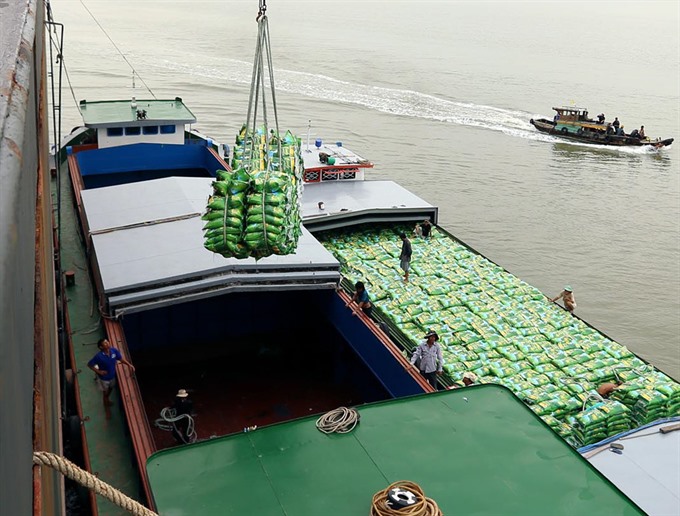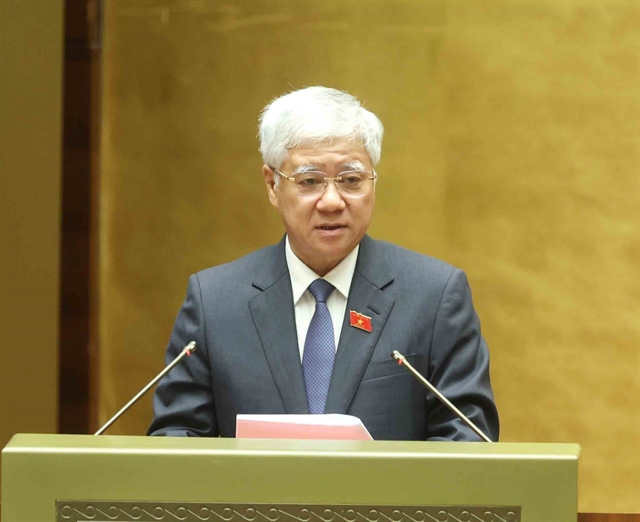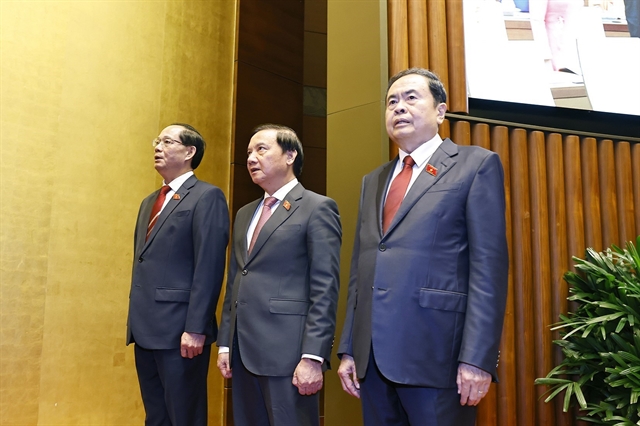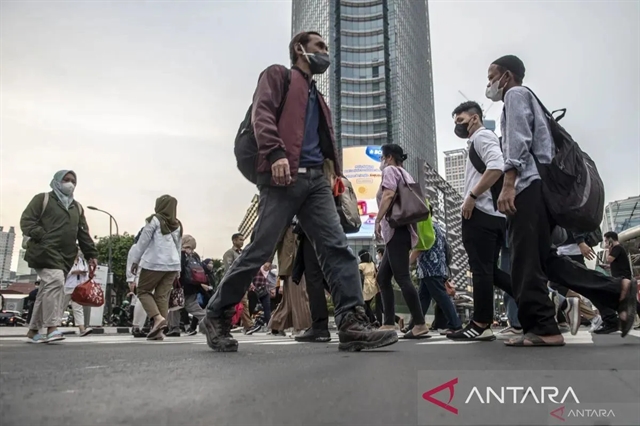

Because of climate change, Kiên Giang province is struggling to maintain its place as Việt Nam’s biggest rice producer – a distinction it has held for nearly two decades.
 |
| Rice uploading for export at the Southern Food Company in Hồ Chí Minh City. Saltwater intrusion in 2017 destroyed over 30,455 ha of rice fields in Kiên Giang Province, heavily affecting the country’s rice export. VNA/VNS Photo Vũ Sinh |
KIÊN GIANG — Because of climate change, Kiên Giang province is struggling to maintain its place as Việt Nam’s biggest rice producer – a distinction it has held for nearly two decades.
The province is well positioned to produce rice. Located on the coast, in an area in Cửu Long (Mekong Delta) with some of the country’s richest soil, Kiên Giang is home to more than 357,000 ha of rice paddies. It produces an average of over four million tonnes of rice each year.
But ever-rising seas have deposited saltwater deeper into the province, contaminating the three key production areas of Long Xuyên Quadrangle, West Hậu River and U Minh Thượng and killing off hundreds thousands of hectares of rice over the last few years.
“Climate change is affecting the growth of local agriculture,” said deputy director of the province’s agriculture and rural development department Đỗ Minh Nhựt.
He cited drought and the intrusion of saltwater as factors that had damaged more than 56,500 ha of fields in 2016 alone, reducing that year’s yield by more than 481,200 tonnes compared to the previous year.
Saltwater intrusion continued in 2017, destroying over 30,455 ha. Heavy rain and flooding damaged an additional 7,150 ha.
Aquaculture
Agriculture in Kiên Giang is not only about rice. As a seaside province, it has developed its aquaculture by focusing on farming shrimp, fish, crabs, and clams.
According to the municipal Department of Agriculture and Rural Development, aquaculture areas have grown steadily since 2015, producing more than 217,000 tonnes of seafood last year.
“Aquaculture has helped increase the value of Kiên Giang’s agriculture sector, lifting farmers out of poverty and raising their quality of life,” said department director Nguyễn Văn Tâm.
“However, annual productivity has not yet reached its potential, especially in shrimp farming. One important factor is certainly the negative impact of climate change.”
Tâm said prolonged drought and the intrusion of saltwater had cost farmers more than 22,188 ha of shrimp farms in the 2015-2016 season. Similar environmental factors caused the loss of 6,000 ha in 2017 and 10,000 ha so far this year.
With its economy threatened by climate change, Kiên Giang is pushing ahead with new irrigation facilities to manage the rapid invasion of saltwater.
The province is investing VNĐ950 billion (US$42.2 million) to finance new sluice gates along the An Biên-An Minh coastal dyke that will prevent saltwater intrusion and retain as much fresh water as possible. The funds will also go towards a massive network of irrigation channels in the Long Xuyên Quadrangle and West Hậu River agricultural areas.
Although the province had already invested much of its own money, Kiên Giang People’s Committee chairman Phạm Vũ Hồng said it would need more financial support from the central Government to protect its agricultural sector from climate change. — VNS




